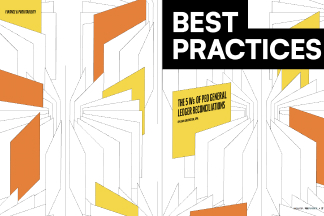ACHIEVING SUCCESS IN PEO M&A TRANSACTIONS: KEY ELEMENTS FOR COST-EFFECTIVENESS AND SUCCESS
May 2024


In today’s competitive business environment, mergers and acquisitions (M&A) have emerged as powerful tools for companies to drive growth, expand market presence, and enhance competitiveness. Within the Professional Employer Organization (PEO) sector, executing successful M&A transactions requires a strategic and multi-faceted approach.
This article focuses on the essential elements for achieving cost-effective and successful M&A transactions in the PEO sector, including:
- Appropriately sizing due diligence
- Evaluating risk against the purchase price
- Industry knowledge
- Cultural fit
- Linking corporate strategy to M&A strategy
- Transparent decision-making processes
- The importance of an experienced M&A team and cooperation with external advisors and specialists
Appropriately Sizing Due Diligence
Due diligence is the cornerstone of any M&A transaction, providing valuable insights into the target company’s operations, financial health, regulatory compliance, and potential risks. In the PEO sector, where regulatory requirements and client relationships are paramount, due diligence must be appropriately sized to uncover critical information without unnecessarily prolonging the process or inflating costs.
Key areas of focus include assessing client contracts, employee benefits programs, compliance with labor laws, and the scalability of technology infrastructure. By tailoring due diligence to the specific needs and objectives of the transaction, acquirers can identify potential deal-breakers early on and negotiate more favorable terms.
Evaluating Risk against the Purchase Price
Balancing risk and reward is essential when determining the purchase price in an M&A transaction within the PEO sector. Acquirers must conduct a comprehensive risk analysis to assess factors such as client concentration, attrition history, regulatory changes, and competitive pressures.
By evaluating these risks against the perceived value and growth potential of the target company, acquirers can negotiate a purchase price that reflects a fair exchange of value while providing a sufficient margin of safety. Structuring the deal with appropriate risk-sharing mechanisms, such as earn-outs or contingent payments, can further align the interests of both parties and mitigate downside risk. Whether pegged to a multiple of gross margin, EBITDA, or some other calculation mechanism, setting the right purchase price and contingency structure is key to a successful M&A transaction in the PEO space.
Knowledge of the Industry
A deep understanding of the PEO sector is indispensable for navigating the intricacies of an M&A transaction successfully. Acquirers must stay up to date on industry trends, regulatory developments, and competitive dynamics to make informed decisions and capitalize on opportunities.
Industry knowledge enables acquirers to identify strategic targets, assess synergies, and develop integration plans that maximize value creation. Moreover, leveraging industry relationships and networks can facilitate deal sourcing, due diligence, and post-merger integration efforts, enhancing the efficiency and effectiveness of the transaction. Identifying technology and vendor overlap between the acquirer and the target and having a successful migration/integration plan are of particular importance in PEO deals.
Cultural Fit
Cultural fit is often overlooked but critically important in the success of M&A transactions. Given the people-centric nature of the PEO sector, aligning organizational cultures and values is essential for fostering employee engagement, retaining key talent, and preserving client relationships.
Acquirers must assess cultural compatibility early in the due diligence process and develop strategies to address any potential mismatches. Building trust, communication, and collaboration between the acquirer and the target company’s employees, and ultimately its clients, is necessary to ensure a smooth transition and realize the full potential of the combined entity.
Linking Corporate Strategy to M&A Strategy
Effective M&A transactions within the PEO sector are grounded in a clear understanding of the acquirer’s corporate strategy and objectives. Acquirers must articulate how the transaction aligns with their long-term goals, whether it’s expanding geographic reach, diversifying service offerings, building critical mass in an existing area, or gaining competitive advantage.
By linking corporate strategy to M&A strategy, acquirers can prioritize target selection, allocate resources effectively, and drive value creation for shareholders. Moreover, a well-defined M&A strategy provides a framework for evaluating potential opportunities, conducting due diligence, and executing integration plans with precision and purpose.
Transparent Decision-Making Process
Transparency and open communication are essential throughout the M&A process to build trust and alignment among stakeholders. Acquirers must establish clear decision-making criteria and involve key stakeholders, including board members, executives, and advisors, in the evaluation and approval process.
Transparent communication helps manage expectations, mitigate conflicts, and address concerns proactively, fostering a collaborative and constructive environment for deal execution. By keeping stakeholders informed and engaged at every stage of the transaction, acquirers can minimize uncertainty and resistance, paving the way for a smoother integration and realization of synergies.
Experienced M&A Team or Cooperation with External Advisors and Specialists
Engaging experienced professionals with expertise in M&A transactions within the PEO sector is instrumental in navigating the complexities and nuances of the deal process. Whether it’s internal M&A teams or external advisors and specialists (or both), having seasoned professionals on board brings valuable insights, analytical rigor, and negotiation skills to the table.
Experienced M&A teams can provide strategic guidance, perform rigorous due diligence, and execute integration plans with precision and speed, reducing execution risks and enhancing the likelihood of success. Moreover, external advisors and specialists can offer independent perspectives, access to industry benchmarks, and negotiation leverage, augmenting the acquirer’s capabilities and maximizing value creation.
Achieving success in M&A transactions within the PEO sector requires a comprehensive and disciplined approach that encompasses multiple critical elements. By integrating the foregoing elements into their M&A strategies and execution plans, acquirers can navigate the complexities of the PEO sector with confidence and realize the full potential of their investments.
This article is designed to give general and timely information about the subjects covered. It is not intended as legal advice or assistance with individual problems. Readers should consult competent counsel of their own choosing about how the matters relate to their own affairs.
-
SHARE
- Copy to clipboard




